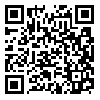BibTeX | RIS | EndNote | Medlars | ProCite | Reference Manager | RefWorks
Send citation to:
URL: http://jdm.tums.ac.ir/article-1-308-en.html
Background and Aim: Pulpotomy is one of the routine methods for pulp therapy of primary teeth. At present it is a fact that ideal agent for this has not been discovered. The aim of this study was to compare the clinical and radiographic success rates of electrosurgical pulpotomy versus formocresol pulpotomy in human primary molar teeth.
Materials and Methods: In this clinical trial study, pulpotomy was performed on 68 primary molars in children aged from 5 to 10 years. The teeth were treated using either a conventional formocresol (35 teeth), or electrosurgical technique (33 teeth). Following the pulpotomy procedure, the teeth were evaluated regarding clinical and radiographic success for 3, 6 and 9 months periods. The teeth were evaluated clinically and radiographically for the presence of pain, abscess, fistula, mobility, internal and external resorption and radiolucency. Finally clinical and radiographic data were collected and analyzed with Fisher exact test using P<0.05 as the limit of significance.
Results: After 9 months follow up, the clinical and radiographic success rates for the electrosurgery group were 96% and 84% respectively and for formocresol group, 100% and 96.8% respectively. There were no statistically significant differences between the success rates for the two groups (P>0/05).
Conclusion: Although electrosurgical pulpotomy is a nonpharmacological and easy to use technique, further investigations with longer evaluation periods are suggested.
| Rights and Permissions | |
 |
This work is licensed under a Creative Commons Attribution-NonCommercial 4.0 International License. |




